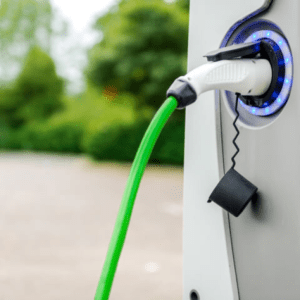One of the next big things when it comes to electric cars is Vehicle-to-Load (V2L) technology. You might have seen it mentioned a few times before and you may have also seen a vehicle-to-load charging cable on sale.
To find answers to some of the questions EV owners might have about V2L and V2L cables, read on – our handy guide is designed to make these new cables easy to understand.
What is V2L and what does a V2L charging cable do?
V2L is a bidirectional power feature that, at the moment, is only present on a handful of electric cars.
When used in conjunction with a vehicle-to-load charging cable, it allows the electric vehicle’s battery pack to act as an external battery pack, to power devices outside of the car. This includes anything from powering your oven and kettle while cooking your dinner, to your electric bike ahead of your commute in the morning or power tools when gardening.
The amount of power a V2L system can draw varies depending on the electric car – it’s typically set at 2.3 kW (about the same as a regular 3-pin domestic plug), but it can be as high as 3.6 kW!
How does a V2L (Vehicle to Load) charging cable work?
A V2L charging cable has two different components on each end – a standard Type One or Type Two electric vehicle charging socket on one end that you plug into your electric vehicle and a female 3-pin socket that allows you to plug into any devices you want to power with the car’s battery.
The charging cable doesn’t contain any of the technology required to manage V2L, such as the ability to convert from DC to AC current – all the charging cable does is handle the load and power transfer from the vehicle to the appliance.
Instead, the electric vehicles themselves have an onboard converter that converts the DC current required to power the vehicle to the AC current required to power external appliances.
What vehicles have V2L capability?
In theory, any electric car can have vehicle-to-load capability. However, not very many of them do at present.
Electric cars that currently have it include, the:
- Mitsubishi Outlander plug-in hybrid
- Hyundai Ioniq 5 and Ioniq 6
- Kia EV6 and Kia Nero EV (2023)
- Nissan Leaf (Models 2013 and onwards)
- BYD Atto 3
- MG ZS EV and MG MG4
- Ford F-150 Lightning
- Genesis GV60
- Volkswagen ID Buzz
- Rivian R1T electric pickup trucks
- Ford E-Transit Custom van
More cars are expected to add or include this feature in the future, potentially through over-the-air updates as well as having the hardware added to do so, so keep an eye out for an increasing electric car market with this capability if you are looking to purchase in the near future.
But what about Teslas?
Interestingly, Tesla’s stance on adding this feature is quite murky. The company has never confirmed if its cars are capable of any kind of bidirectional charging, but a technical teardown done on Tesla’s onboard charger in 2020 revealed that it is bidirectional capable.
Tesla advises then that attempting any kind of bidirectional charging using its cars could void the warranty and recently we learned that most Teslas will have bidirectional charging by 2025 anyway, so even if your Tesla is capable, it’s probably best not to give it a go until then.
When will you need a V2L charging system?
As you’ve probably already guessed, vehicle-to-load V2L capability is incredibly useful in any situation where you’re off the electricity grid, as it gives you an alternative way to power devices without paying for electricity.
The most likely situations include:
- If you’re on a camping trip
If you and the family are getting back to nature, you can use your electric vehicle to power devices or electrical appliances that you may need.
Whilst this will likely be limited to things like charging mobile phones and powering portable camping equipment, like electric kettles and electric stoves, it’s still something that’s incredibly useful for any kind of off-grid adventures!
- On any kind of building or construction site
Electric vehicles with V2L capability are a really great power source for any kind of power tools that somebody on a construction site might need to use.
Because of this, it’s likely that V2L capability will be absolutely essential for any kind of work electric vehicle, including those used by landscapers or gardeners.
- If a motorist is stranded
If you come across a fellow driver who’s run out of battery, you can use vehicle-to-load (V2L) capabilities to top-up their EV battery and get them back on the road to the nearest garage or charging station for a repair or proper charge.
For more help with a bidirectional power feature, speak to EV Cable Shop
While still in its infancy, vehicle-to-load V2L charging and capabilities will no doubt skyrocket in future, both as a way of saving money and making smarter choices with electricity.
If you are new to the world of EVs and want to know more about how you can use stored energy or are just in need of new EV charging cables to keep you trucking on – browse our range or call us on 01744 886 305 or fill in our enquiry form and we’ll be in touch!





